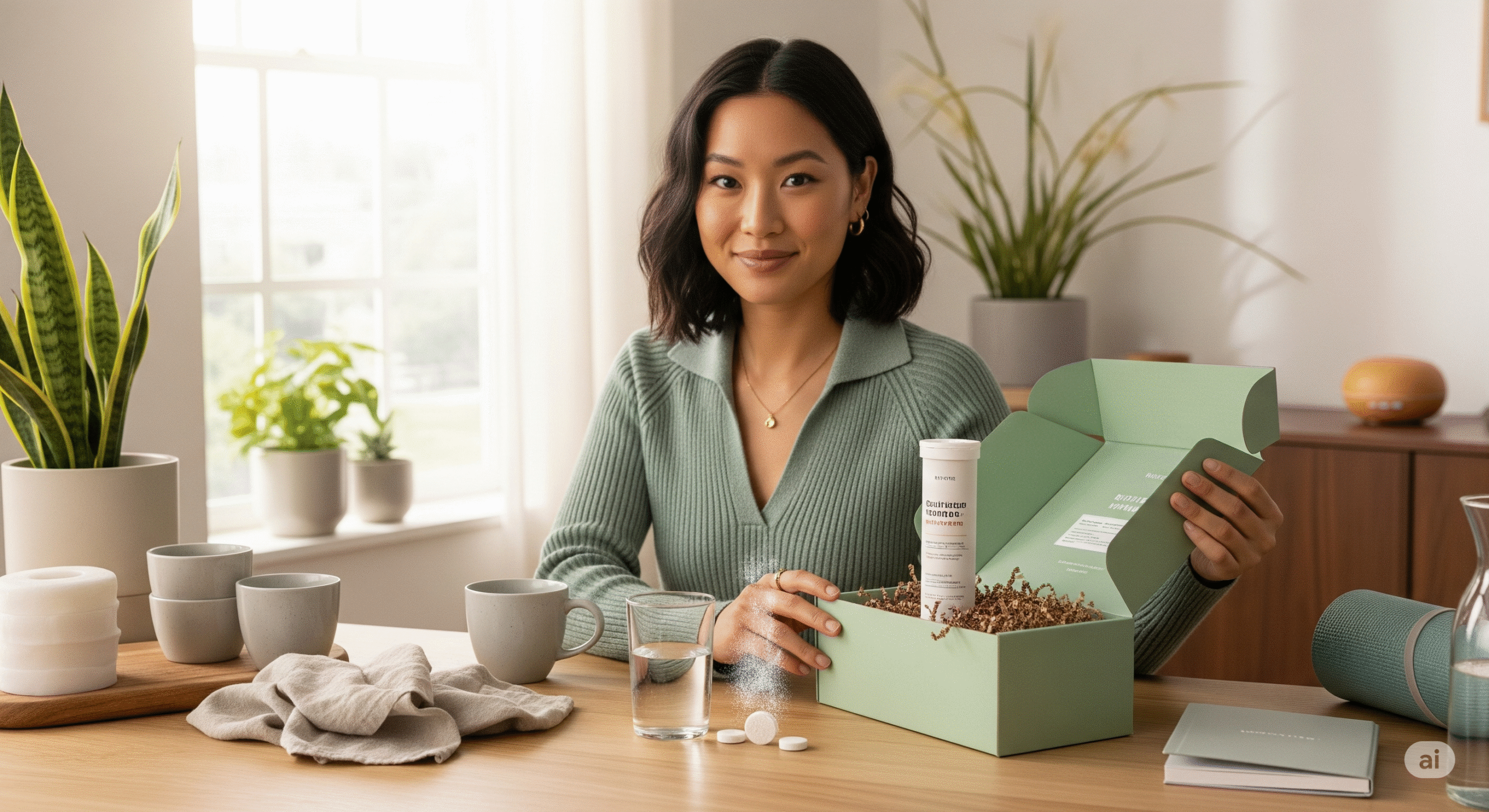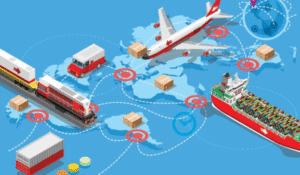Introduction
Wellness doesn’t travel well – unless you know exactly how to move it.
A bottle of probiotics. A clean-label serum. A wellness gadget designed to restore calm. They may look simple on a shelf, but getting them there, especially across international borders, is anything but. Global wellness shipping isn’t just about sealing a package and slapping on a label. It’s a high-stakes operation that demands precision at every stage.
From concept formulation and ingredient sourcing to regulatory compliance, climate-controlled logistics, and the last-mile delivery, each phase is a potential risk or a competitive advantage.
This isn’t just supply chain management- it’s brand preservation. Because in wellness, one misstep can mean a ruined product, a regulatory setback, or a lost customer.
Here’s how we take an idea from concept to container and get wellness into the hands of people, wherever they are in the world.
1. Concept to Compliance
Every wellness product starts with an idea but not every idea is legally shippable.
Before anything goes into production or onto a shelf, it has to meet the standards of regulators around the world. And in wellness, those standards are complex and often inconsistent. The FDA in the U.S., Health Canada, the European Medicines Agency, and other global bodies all have unique requirements for ingredients, dosage, labeling, and marketing claims.
That means a formula that works in one country could be banned in another. A label that passes review in Europe might trigger a customs rejection in the U.S. And that’s where compliance becomes a strategy, not a task.
We build our product development process around compliance from day one tracking every formula, document, and certification in a centralized compliance system. It’s a digital record that ensures every product component is accounted for, tested, and cleared for the markets we serve.
Beyond the paperwork, we work directly with vetted suppliers and conduct regular audits to make sure ingredients are traceable, ethically sourced, and meet international safety standards. This reduces the risk of delays, fines, or full shipment rejections at the border.
By embedding compliance into the product lifecycle early, we don’t just protect the brand—we build the foundation for scalable, international growth.
2. Protecting the Product
Wellness products often don’t play nice with heat, light, or humidity.
Imagine this: A bottle of probiotics, a skin serum, or an essential oil, these aren’t just products; they’re carefully crafted formulas designed to deliver specific health benefits. But their effectiveness relies on how they’re stored and transported. When exposed to the wrong conditions like high heat, excessive moisture, or too much sunlight their active ingredients can degrade, losing potency or even becoming unsafe for consumers.
For this reason, protecting the product during its journey from the manufacturing facility to the customer’s door is critical. We’re not just talking about sealing boxes and stacking pallets. We’re talking about climate-controlled storage and specialized transport that ensures every item stays within the precise conditions it needs.
Probiotics may lose their efficacy in a hot truck. Essential oils can change in scent and texture if exposed to UV rays. Supplements and skincare products can separate, become contaminated, or even degrade if not kept in proper environments.
This is why we only work with logistics partners who have a proven track record of managing sensitive inventory those with the technology, facilities, and expertise to handle everything from temperature-sensitive probiotics to high-end oils and serums.
From warehouse to delivery, every handoff is carefully managed. By using climate-controlled trucks and temperature-monitoring containers, we ensure that products are delivered with their efficacy and shelf life intact. No surprises. No compromises.
For wellness brands, this is where attention to detail can make all the difference between a satisfied customer and a product that’s ineffective or even harmful.
3. Coordinating the Supply Chain
Behind every wellness product is a web of sourcing decisions that span continents. A single supplement might include plant extracts from India, minerals from South America, packaging from Europe, and final assembly in North America. That’s not just complex it’s a logistical ballet.
In the wellness space, sourcing isn’t just about availability or cost. It’s about ethics, sustainability, and traceability because today’s consumer isn’t just reading the label, they’re researching it. They want to know where each ingredient came from, how it was harvested, and whether it was produced responsibly.
That’s why we prioritize ethically sourced and environmentally sustainable materials. We vet our suppliers not only for quality but also for their labor practices, environmental impact, and compliance with global standards.
But here’s the tricky part: global sourcing is a constant calibration. Balancing speed, cost, and environmental impact means making tough decisions every day. A faster route might cost more. A cheaper supplier might lack transparency. Our job is to navigate those trade-offs without compromising product integrity or customer trust.
To make that possible, we’ve built transparency into our workflow. We track every raw material, every partner, and every shipment from origin to final delivery. That kind of visibility doesn’t just help us solve problems faster, it gives our partners and their customers confidence that the wellness they’re buying is exactly what it claims to be.
Because in wellness, trust is part of the product.
4. Clearing Customs, Crossing Borders
International borders are where great products often hit real-world roadblocks.
Shipping wellness products globally means dealing with customs regulations, import restrictions, and country-specific documentation requirements, each one with its own nuances, deadlines, and red tape. It’s not uncommon for a shipment to be delayed (or outright rejected) because of a missing certificate, a misworded label, or an ingredient that’s restricted in just one region.
That’s why we don’t leave this part to chance.
Every shipment we manage is backed by meticulously prepared paperwork, complete with ingredient breakdowns, compliance declarations, and destination-specific labeling. Whether it’s navigating the EU’s cosmetic regulations or Canada’s supplement import rules, we’re fluent in the language of logistics.
But documents alone aren’t enough. We work with experienced fulfillment partners who know how to get wellness products through customs without delay. They know which questions regulators ask. They’ve seen the pitfalls. They understand how to protect both the product and the brand at the border.
It’s also about maintaining product integrity during international transit. From packaging that can withstand long hauls to real-time monitoring that ensures temperature or moisture thresholds aren’t breached, we treat every shipment like it’s under inspection because it usually is.
When wellness crosses borders, precision is protection. And we build that protection into every box, pallet, and customs form we ship.
5. Delivery That Builds Trust
The moment a wellness product lands in a customer’s hands isn’t just the end of a supply chain, it’s the beginning of a relationship.
In a market where consumers expect both quality and speed, delivery is no longer a backend function, it’s part of the brand experience. If a shipment arrives late, damaged, or with unclear tracking, trust erodes no matter how great the product inside may be.
That’s why we treat delivery as a final, critical checkpoint in our process.
We partner with carriers that understand the urgency and sensitivity of wellness goods, ensuring that packages arrive fast, intact, and trackable. Whether it’s express delivery across continents or local fulfillment in emerging markets, we tailor shipping methods to meet expectations and avoid friction.
But speed isn’t everything. What matters just as much is communication. Customers want to know where their product is, when it’s arriving, and who’s handling it. By offering real-time tracking and proactive updates, we manage expectations and reduce anxiety, especially important when wellness is tied to daily routines or urgent needs.
We also factor in the small details: branded packaging, secure sealing, and inserts that reinforce brand values and care. Because for many customers, that unboxing moment is the brand’s first in-person interaction and first impressions matter.
When done right, delivery isn’t just logistics.
It’s trust, wrapped in a box.
Conclusion
Shipping wellness globally is more than just moving products; it’s a chain of trust, built from formulation labs to front doors. Every step compliance, climate control, clean sourcing, and careful delivery shapes the customer experience and defines the brand.
At every point in this journey, precision matters. Because in wellness, what arrives in the box is only as strong as the process behind it.
Frequently Asked Questions (FAQs)
1. What are the biggest regulatory hurdles when shipping wellness products internationally?
Shipping wellness products means navigating a patchwork of international laws, ingredient restrictions, labeling standards, health claims, and import certifications. Regulations vary by region, and noncompliance can lead to blocked shipments, fines, or brand damage. Early compliance planning is critical to global success.
2. How do I ensure my wellness product maintains quality during international shipping?
Temperature, humidity, and light exposure can destroy product efficacy. Wellness brands must use climate-controlled storage and transport, especially for sensitive products like probiotics, oils, and serums. Specialized logistics partners with experience in handling these goods are essential.
3. What kind of labeling do I need for cross-border wellness shipments?
Labeling requirements differ by country and product category. Some countries require ingredient breakdowns, bilingual text, batch numbers, or specific health warnings. Labels must match regulatory language exactly; errors can cause customs delays or product rejection.
4. What are the best shipping methods for wellness products?
Shipping depends on the product type and destination. Perishables often require air freight with cold chain handling, while shelf-stable items can go ground or ocean. A hybrid model using regional fulfillment hubs plus international express often offers the best balance of speed, cost, and reliability.
5. Can I outsource fulfillment for my wellness brand?
Yes, and it’s often the smartest way to scale. 3PL (Third-Party Logistics) providers with experience in health and wellness understand the regulatory landscape, temperature sensitivity, and customer expectations. Outsourcing lets brands focus on growth while logistics experts handle the complexity.




